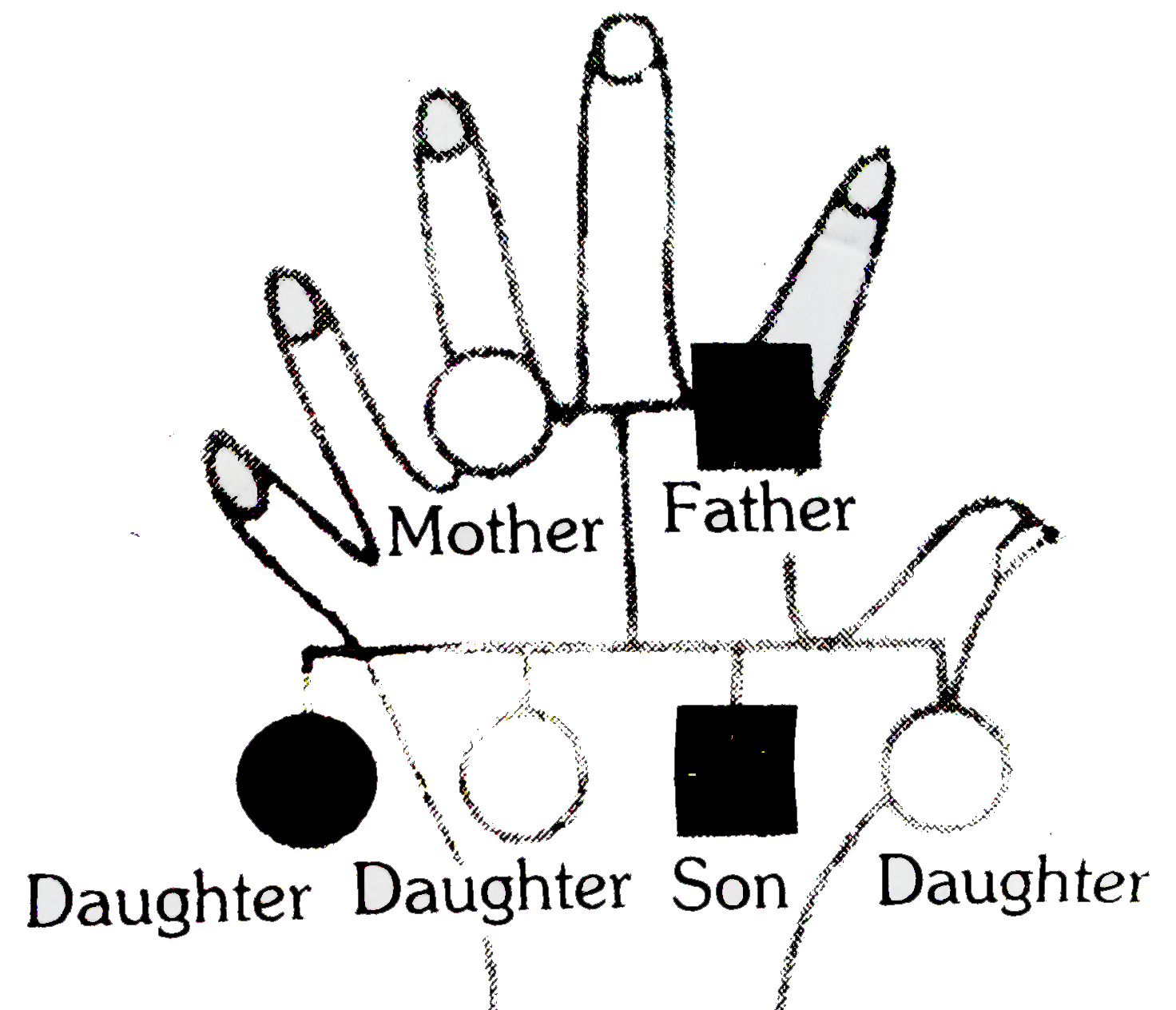A parent having autosomal dominant disease then what will be the probability of diseased offspring irrespective of sex of the child?
The correct Answer is:C
To solve the problem of determining the probability of offspring affected by an autosomal dominant disease when one parent has the disease, we can follow these steps:
1. Understand Autosomal Dominant Inheritance:
- In autosomal dominant diseases, only one copy of the mutated gene (dominant allele) is sufficient to express the disease. This means that if a parent has the disease, they can pass on the affected allele to their offspring.
2. Identify the Genotypes:
- Let’s denote the dominant allele (disease-causing) as "A" and the normal allele as "a".
- The affected parent can have one of two genotypes: AA (homozygous dominant) or Aa (heterozygous). However, for the purpose of this question, we will consider the more common scenario where the affected parent is heterozygous (Aa).
3. Determine Possible Gametes:
- The affected parent (Aa) can produce two types of gametes: A (disease allele) and a (normal allele).
- The unaffected parent (aa) can only produce one type of gamete: a (normal allele).
4. Set Up a Punnett Square:
- Create a Punnett square to visualize the potential offspring genotypes:
A|a−−−−−−−−−−−−−−−−−a|Aa|aa−−−−−−−−−−−−−−−−−a|Aa∣aa
- From the Punnett square, we can see the possible genotypes of the offspring:
- 50% (2 out of 4) will be Aa (affected)
- 50% (2 out of 4) will be aa (unaffected)
5. Calculate the Probability:
- Therefore, the probability of having an affected offspring (Aa) is 50%.
Final Answer:
The probability of having a diseased offspring, irrespective of the sex of the child, is 50%.
- In autosomal dominant diseases, only one copy of the mutated gene (dominant allele) is sufficient to express the disease. This means that if a parent has the disease, they can pass on the affected allele to their offspring.
- Let’s denote the dominant allele (disease-causing) as "A" and the normal allele as "a".
- The affected parent can have one of two genotypes: AA (homozygous dominant) or Aa (heterozygous). However, for the purpose of this question, we will consider the more common scenario where the affected parent is heterozygous (Aa).
- The affected parent (Aa) can produce two types of gametes: A (disease allele) and a (normal allele).
- The unaffected parent (aa) can only produce one type of gamete: a (normal allele).
- Create a Punnett square to visualize the potential offspring genotypes:
A|a−−−−−−−−−−−−−−−−−a|Aa|aa−−−−−−−−−−−−−−−−−a|Aa∣aa
- From the Punnett square, we can see the possible genotypes of the offspring:
- 50% (2 out of 4) will be Aa (affected)
- 50% (2 out of 4) will be aa (unaffected)
- Therefore, the probability of having an affected offspring (Aa) is 50%.
The probability of having a diseased offspring, irrespective of the sex of the child, is 50%.
Topper's Solved these Questions
- PRINCIPLES OF INHERITANCE AND VARIATIONBOOK - A2ZCHAPTER - PRINCIPLES OF INHERITANCE AND VARIATIONEXERCISE - Section D: Chapter-end Test
50 Videos
- PRINCIPLES OF INHERITANCE AND VARIATIONBOOK - A2ZCHAPTER - PRINCIPLES OF INHERITANCE AND VARIATIONEXERCISE - SECTION A : TOPICWISE QUESTIONS ((TOPIC 1: MENDEL'S LAW OF INHERITANCE)
22 Videos
- PRINCIPLES OF INHERITANCE AND VARIATIONBOOK - A2ZCHAPTER - PRINCIPLES OF INHERITANCE AND VARIATIONEXERCISE - SECTION C: PREVIOUS YEARS' EXAMINATION QUESTIONS (NEET/AIPMT Questions)
84 Videos
- ORGANISMS AND POPULATIONS BOOK - A2ZCHAPTER - ORGANISMS AND POPULATIONS EXERCISE - Section D: Chapter-end Test
50 Videos
- REPRODUCTIVE HEALTHBOOK - A2ZCHAPTER - REPRODUCTIVE HEALTHEXERCISE - Section D: Chapter-end Test
50 Videos
Similar Questions
Knowledge Check
Trisomic autosomal congential disease is
ACriminal syndromeBDown's syndromeCKlinefelter's syndromeDTurner's syndromeIn the given human hand pedigree which character is represented and what is the probability of disease occurrence in fifth child
 APolydactyly (X-linked recessive disorder ),50%BPolydactyly (X-linked dominant disorder),50%CPolydactyly(autosomal recessive disorder), 50%DPolydactyly (autosomal dominant disorder), 50%
APolydactyly (X-linked recessive disorder ),50%BPolydactyly (X-linked dominant disorder),50%CPolydactyly(autosomal recessive disorder), 50%DPolydactyly (autosomal dominant disorder), 50%Sex linked disease is
AHaemophiliaBColourblindnessCSickle-cell anaemiaDBoth (a) and (b)
What will be the genotypes of parents whose offsprings have equal percentage of four phenotypes ?
View SolutionMr phillips is colourblind. What is the probability of his male child inheriting this disease from him?
View SolutionIf a mother and father both have one mutant gene for a disease with an autosomal dominant inheritance, what is their risk of having an affected child?
View SolutionA sex linked trait/disease is
View SolutionSelect the hereditary disease which is carried on autosomes?
View Solution
